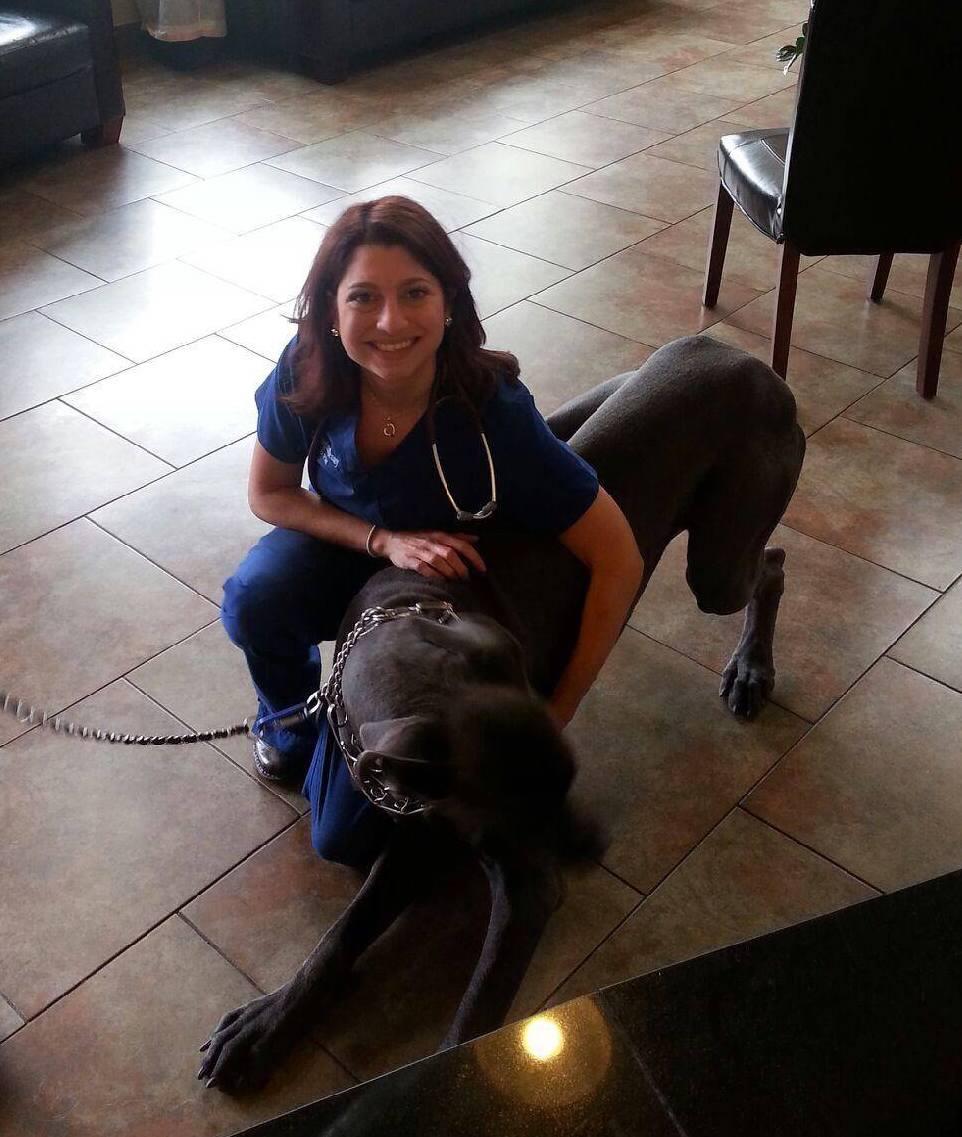Dog Laser Therapy Discussion with Veterinarians
Laser Therapy for Dogs - What You Need to Know
Dog laser therapy is an effective way to help your dog heal from various ailments, including surgical procedures. It’s a non-invasive, spa-like experience for your dog, making it stress-free for you and enjoyable for your four-legged family member. If your dog is a candidate for laser therapy, you likely checked with Dr. Google to learn more about it. At GeniusVets, we believe that pet care information should come from veterinarians and not the internet, especially with topics as specific as dog laser therapy. That’s why we’ve taken the top dog laser therapy FAQs, sent these questions to renowned veterinarians across the U.S., and compiled their replies to provide you with information you can trust.
While we've sourced all of the dog laser therapy information and recommendations below directly from leading veterinarians across the country, please make sure to seek out the advice of your own veterinarian or find a trusted vet near you using the GeniusVets Directory.
How is laser therapy used to treat dogs?
Laser therapy is a non-invasive photobiomodulation therapy that uses a special light to penetrate the skin and tissue to help open up blood flow to the area. It helps accelerate the body's natural healing process. Laser therapy is used in many different ways to treat dogs by shining a laser to the dog's surface in the area where they’re experiencing pain or had an injury. The light is absorbed by the cells and the tiny mitochondria, which are the engines that produce energy inside the cells. Essentially, the cells in the tissue that need to heal get more active and start functioning better.
Why should I consider using laser therapy for my dog?
Veterinarians use laser therapy for many different situations to help aid in the healing process the body needs to go through.
Laser therapy is most commonly used:
- When a pet gets spayed or neutered, at the incision site to help decrease pain, help prevent inflammation at that incision site, and allow it to heal faster.
- If a dog has a bad ear infection, especially if the ear looks inflamed or swollen.
- If a dog has a fracture, from a broken toe to a broken leg.
- For arthritis or degenerative joint disease management because it helps dogs with the inflammation in their joints and helps block some of that pain.
These dogs are often in a lot of pain, and their veterinarians have them on medications. If your dog isn't getting better, they're going to need more medications. For example, an older dog with hip dysplasia and arthritis will be on many anti-inflammatory and pain medications. At an age where their organ function is also declining, this is not the best option for the dog. Laser therapy can improve their quality of life, decreasing pain and subsequently also reducing the number of medications they’re on, giving their organs a chance to recoup as well.
What are the different laser therapies, and when might the veterinarian recommend them for my dog?
There is only one major modality for therapeutic laser: a low-level, frequency-specific laser – one that's not going to burn or cut the tissue. Frequency-specific means the veterinarian can target specific cells in the area of injury. For instance, if a dog had an ACL tear or an anterior cruciate ligament tear in their knee, your veterinarian will target those ligament cells, connective tissue cells, muscle cells, joint cells, and inflammatory cells to get them all working together.
Some lasers may be too high power and will decrease inflammation and minimize pain. But a low-level laser will affect biomodulation – meaning it’s changing tissues and making tissues heal. It’s not just taking away the pain and inflammation but also changing the tissues for the better.
For what conditions can laser therapy be used to treat my dog?
Laser therapy can treat several conditions and is also used for surgical pain so your dog wakes up more comfortable. It takes away the acute pain and gets the cells to work better to heal from surgery. In surgery, a veterinarian cuts and damages tissue, and the laser helps those cells heal even better.
The most common uses of laser therapy in dogs include:
- Anterior cruciate ligament tears
- Arthritis in senior dogs
- Bladder infections
- Chronic cystitis Dermatology, including allergies
- Disc injuries, back pain, and neck pain
- Chronic ear inflammation
- Other common conditions that may be causing pain, such as an acute injury
What can I expect from my dog's laser therapy appointment?
You can expect a lot of love, cuddles, and treats. The veterinarian will move the laser around in a circular motion, with the light coming out through the wand and penetrating through the hair coat and skin. Your dog will get a nice massage in the area being treated. We use three to four different sets of frequency, with each taking about three minutes. You’ll see how relaxed and happy your dog is, much like during a spa day.
How long would a laser therapy session for my dog last?
Laser therapy takes anywhere from 15-20 minutes, depending on what is being lasered. Arthritis sessions tend to take longer, taking approximately five minutes per joint. Laser therapy for wound healing, wound management, and ears tends to be a little quicker, with those laser sessions lasting anywhere from 1-3 minutes.
How many laser therapy sessions will my dog need?
The number of sessions your dog will need depends on the use of laser therapy. Many arthritis patients start with just 1-2 sessions a week for about a month, then come in as needed when they feel like their pet's a little stiff and sore. Sometimes it’s a bit more methodical, like a dog with a surgical wound coming in for 5-7 sessions every other day. We usually treat an acute problem in 5-7 treatments, and chronic problems are closer to 14 to 15 treatments.
A problematic acute condition, such as an ACL, will require two treatments that are 90 minutes apart over the first three days – totaling three hours the first three days. Then they’ll have daily treatments for another three days, three treatments the following week, and two treatments the next week.
Are there any risks associated with laser therapy?
There are no risks at all with laser therapy. It’s non-invasive and triggers a natural healing process within the body.
How will I know if the laser therapy is working?
In terms of arthritic pets, you’ll notice them moving around a lot better and having an easier time getting up from a laying down position. For ear problems, you’ll notice the inflammation, thickening, and redness are improving. When used for wound closures, you’ll see that the wound is getting smaller and smaller.
Although rare, some conditions won’t improve, such as a knee injury with a click – an audible sound in the knee when the dog flexes. That's usually a pad between the two bones in the knee called the meniscus, and when that is ripped, it flaps in the joint and is painful. Unfortunately, nothing will fix that except surgery, although your veterinarian may attempt laser therapy first.
The American Animal Hospital Association (AAHA) offers additional insight about laser therapy, including laser classifications and the best candidates for this type of treatment. If you have further questions about dog laser therapy, reach out to your veterinarian. If you don't have one yet, we can help you find a local veterinarian!
The Following Veterinarians
Contributed To The Dog Laser Therapy Information On This Page


The Ultimate Guide
to Dog Care
This free guide is an indispensable manual for dog ownership. Filled with veterinary advice and recommendations on every important topic at each stage of your dog’s life, this is all the stuff that responsible dog owners need to know. That is why we are making it free!





